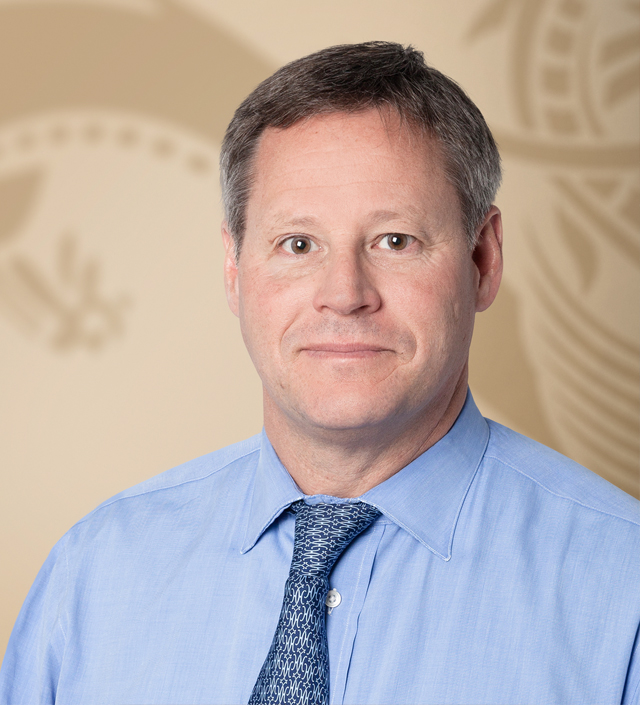The risk of keeping their aging clients on a 60/40 portfolio glidepath may be increasing for financial advisors as they maneuver in an investment world now touched by everything from generative artificial intelligence to renewable energy.
Once the gold standard for investors with the 60% equity allocation sliding downward as clients reach their 60s, the 60/40 portfolio may be creating more financial hazards for the increasing number of investors living to 100 years of age.
“This threat is far less significant if the client dies in their 80s, but innovations in medical technology and healthcare over the next several decades means life expectancies are likely to rise significantly, creating the very real risk that a 60-year-old living to 100 might run out of money during their lifetime,” Ric Edelman, president and founder of The Truth about Your Future, told Rethinking65.
Coupled with technological innovations, greater volatility in interest rates and a changing geopolitical landscape, the risks of longevity are real. “Life, and the world, is more complicated than it used to be. And technological innovations are occurring at faster rates than ever,” said Edelman. “As a result, the traditional ‘set it and forget it’ approach is no longer as effective as it once was. This requires that investors and investment advisors pay attention to innovative ideas and be open to new ways of managing personal finances.”
He added that financial advisors, and their clients, are generally unaware of the changing demographics and the need to make a shift in investment strategy. “There’s been relatively little training in the field of longevity to date,” he added.
Contemporary Trends Impacting the 60/40 Portfolio
Many other investment professionals are also reconsidering the 60/40 split.
In an August 2024 research report, Morgan Stanley analysts said generative artificial intelligence, the increasing use of renewable energy sources and the geopolitical shift to a multipolar world, in which economic power is shared among many countries, is likely to prompt investors to fundamentally reconsider how they diversify their holdings.
The effectiveness of the 60/40 portfolio strategy, said the analysts, will hinge on the relationship between economic growth and inflation. The spread of technology, for example, can act like a supply shock and boost growth while curbing inflation over the short run. Over the longer term, renewable energy may potentially lower energy costs and increase productivity, which would bring growth without higher inflation.
In a June 2024 Journal of Financial Planning article, author John Paglia noted that institutional investors have successfully woven private, or alternative, investments into their portfolios over the past few decades. As regulatory authorities have eased restrictions against some private investments in retirement portfolios, individual investors and their financial advisors may turn to these private capital classes, such as private equity, venture capital and hedge funds. Yet they need to understand the risks and returns associated with private investments and their impact on a diversified portfolio, said Paglia.
Buffer ETFs
During a December 10 webinar “The Retirement Revolution: ETF Solutions for Modern Retirement Planning” hosted by Edelman, he discussed the merits of using buffer ETFs in a more diversified portfolio.
After the webinar, he said that buffer ETFs offer investors an opportunity to address two mutually exclusive problems: how to protect one’s capital from significant, even financially devastating, losses while providing the opportunity to obtain the returns necessary to generate the income needed in retirement and preserving the principal for their lifetimes.
“Adding buffer ETFs to a diversified portfolio is definitely worthy of consideration by advisors and investors alike,” Edelman said.
Andrew Nelson, director of product strategy at Innovator Capital Management, laid out the details of his firm’s buffer ETF products during the webinar. Buffer ETFs, also known as defined-outcome ETFs, provide investors with a buffer against market losses in exchange for a cap on how much investors can profit on market gains.
In a subsequent email, Nelson told Rethinking65 that financial advisors should be seeking additional strategies outside the standard 60/40 portfolio. That portfolio split, he explained, is suboptimal due to shortcomings in traditional investment-grade fixed income.
“Our argument is that investors should reconsider allocating such a high portion to core fixed income, due to several factors: limited upside potential, unfavorable tax treatment, low liquidity and diversification benefits that often fail to deliver,” he added.
In an Innovator Capital Management white paper, “From Bonds to Buffers: Why investors Should Rethink the 60/40,”Nelson said the company’s research indicates that incorporating buffer strategies through a 60/20/20 allocation, instead of a 60/40 allocation, can enhance return potential, offer superior diversification, and provide more effective and consistent risk management.
Edelman said a buffer ETF would be most useful for clients who want exposure to the equity markets while limiting their losses. It would also be useful for clients willing to risk the guarantee of low returns offered by cash reserves (such as low-interest bank savings accounts) in exchange for the opportunity to earn higher returns offered by a 100% buffer ETF.
A fee of 79 basis points (mentioned for one of Innovator’s products) would mean an annual charge of $3,950 per year on a $500,000 account.
Asset Decumulation
A buffer ETF may also be a useful investment vehicle for financial advisors who need to place more focus on asset decumulation of their clients’ portfolios. “Advisors unskilled in decumulation are not able to provide their clients with proper advice, which could cause clients to incur higher fees, higher taxes, greater investment risks and potentially running out of money before they die,” Edelman said. He noted that much of the training for financial advisors has been focused on gathering and managing assets.
“Only recently have large numbers of baby boomers begun to retire — now occurring at the rate of 10,000 per day,” he added. As one shifts from working to retirement, the investor shifts from contributing money to savings, investments and retirement accounts, to withdrawing money from these accounts.
“This decumulation is a relatively new phenomenon — and one with which many advisors have little experience, since most of their clients, for most of their careers, have been accumulators, not decumulators,” Edelman said.
Paula L. Green is a New York City-based freelance journalist with more than three decades of reporting and editing experience that spans coverage of international business and finance issues to murders and politics at the Jersey Shore to presidential press conferences in Argentina and Mexico. She can be contacted by plgreen12004@gmail.com.







